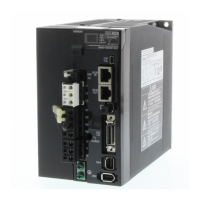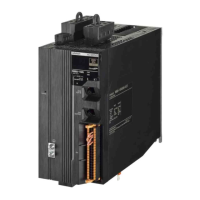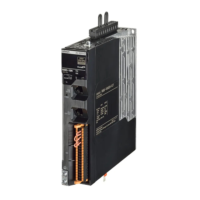8-20
8-4 Overload Characteristics (Electronic Thermal Function)
8
Troubleshooting
8-4 Overload Characteristics
(Electronic Thermal Function)
An overload protection (electronic thermal) function is built into the Servo Drive to protect the Servo
Drive and Servomotor from overloading.
If an overload does occur, first eliminate the cause of the error and then wait at least one minute for
the Servomotor temperature to drop before turning ON the power again.
If the power is turned ON again repeatedly at short intervals, the Servomotor windings may burn out.
Overload Characteristics Graphs
The following graphs show the characteristics of the load rate and electronic thermal function’s
operation time.
When the torque command = 0, and a constant torque command is continuously applied after three
or more times the overload time constant has elapsed, the overload time t [s] will be:
t [s] = − Overload time constant [s]
× log
e
(1 − Overload level [%] / Torque command [%])
2
(The overload time constant [s] depends on the Servomotor. The standard overload level is 115%.)
• Overload (alarm code 16) cannot be reset for approximately 10 seconds
after its occurrence.
100
0.1
1
10
100
150 200 250 300
115
50 W
100 W (100 V)
100 W (200 V)
200 W
400 W
750 W
Time (s)
Torque (%)
100
115
0.1
1
10
100
150 200 250 300
R88M-G@10T 900 W to 6 kW
R88M-G@20T 1 kW to 5 kW
R88M-G@15T 7.5 kW
R88M-G@30T 1 kW to 5 kW
R88M-GP@
100 W to 400 W
Time (s)
Torque (%)
Precautions
for Correct Use
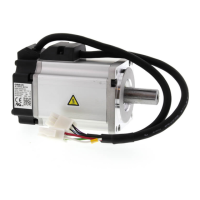
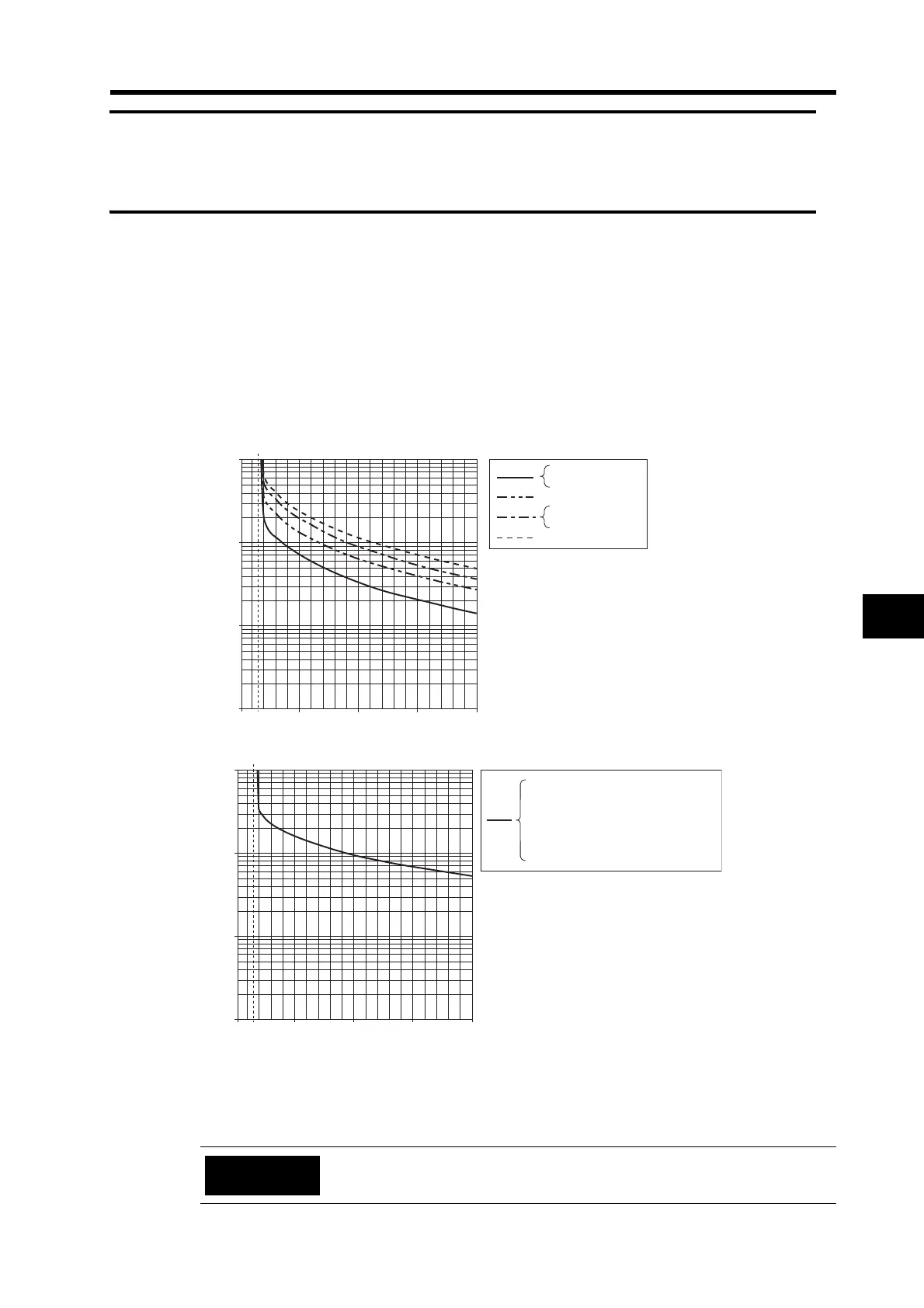